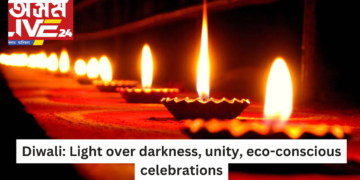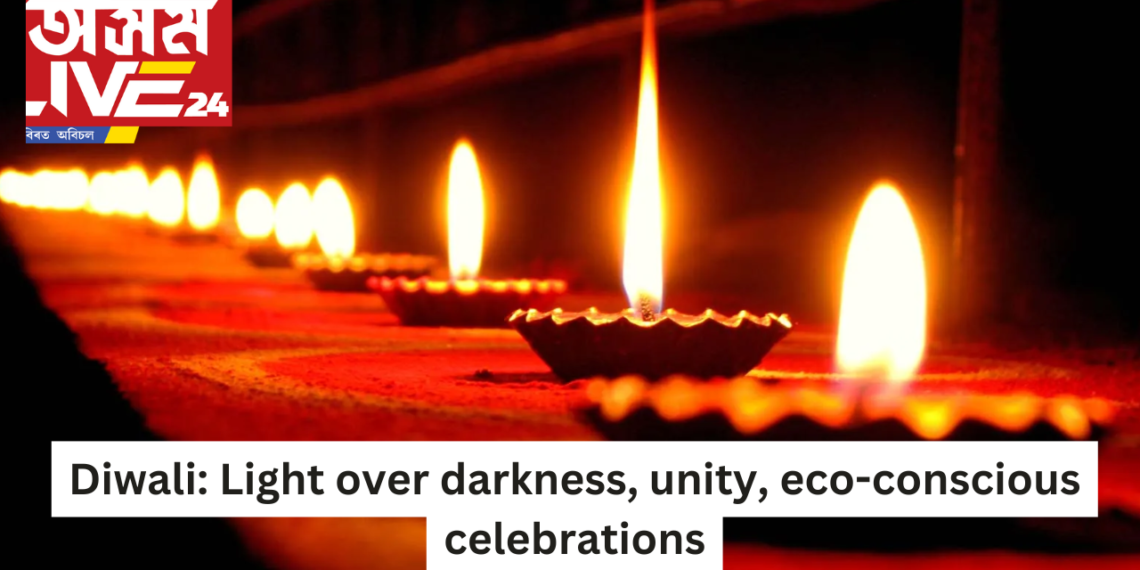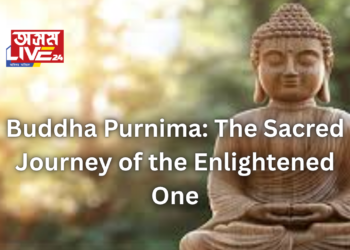Diwali, known as the festival of lights is one of India’s most cherished and widely celebrated festivals. This occasion signifies love, light, and the universal theme of the victory of good over evil. Though Diwali has its roots in hindu tradition, people across various communities both in India and globally, now celebrate this festival with great enthusiasm.
In northern India, diwali celebrates the return of Lord Rama to his kingdom Ayodhya, after a 14-year exile and his victory over the demon king Ravana. To honor his return, people light rows of clay lamps, called diyas to welcome Rama and mark the victory of light over darkness. In southern India, Diwali is celebrated as the day that Lord Krishna defeated the demon Narakasura, bringing peace and freedom to the people. Meanwhile in western India, Diwali observes the day Lord Vishnu, in his incarnation as Vamana, sent the demon King Bali to the netherworld to restore balance to the universe.
During Diwali, homes are decorated with lights, rangoli patterns, flowers and other colorful decorations that bring life and warmth to the environment. Lighting diyas is a symbolic act representing the removal of spiritual darkness and the welcoming of peace and prosperity. For Hindus, lighting the home also serves as a way of honoring their ancestors and inviting positive energy into their lives. The name “Diwali” itself originates from the Sanskrit words deepa (lamp) and avali (row), symbolizing the rows of lamps people place outside their homes to ward off negativity and bring inner peace.
Over time, Diwali has also gained popularity among people from non-Hindu communities who now join in the celebrations by decorating their homes with lights and bursting fireworks. As society evolves many people have adapted their celebrations to include modern decorations, like plastic or electric diyas instead of traditional clay ones. While these artificial lights add convenience some people feel that they lack the charm and symbolism of the traditional lamps.
However, with the joy of Diwali also comes some drawbacks, particularly from the increased pollution associated with fireworks. Firecrackers cause not only noise pollution but also air pollution, posing health risks to people with heart conditions and creating distress for animals, particularly stray animals who lack shelter and protection. There have been reports of animals being harassed with fireworks, an unfortunate and inhumane practice that calls the need for responsible celebrations. Many communities now advocate for “green Diwali” celebrations to minimize pollution and encourage eco-friendly alternatives, such as using quieter fireworks or celebrating with lights and decorations alone.
Despite the challenges, Diwali continues to be a cherished time for family gatherings shared meals and joyful festivities. It is a reminder of the resilience of good, the power of love, and the light that shines within each of us, no matter the obstacles we face.
এনেধৰণৰ অন্যান্য বা-বাতৰিৰ বাবে লাইক কৰক অসম লাইভ ২৪ ৰ ফেচবুক পেজ






















